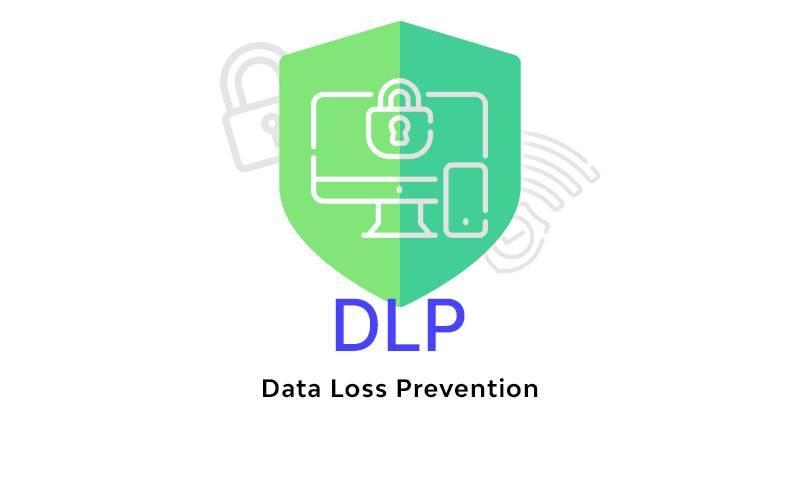What is Continuous Delivery (CD)? 🔄 Pipeline, Benefits
Depending upon the organizational needs, companies will require different kinds of software. It’s not recommended to have a unified development approach to cater to assorted development goals. Continuous Delivery or CD is one of the many preferred development methodologies that software developers adopt.
What does it mean?
What makes CD better than other approaches?
What are the best practices to adopt?
If these are the questions resounding in your mind, keep reading the post to find answers.

Continuous Delivery (CD): What is it?
A novel software development approach, CD involves breaking the entire development goals into short cycles that run simultaneously.
Rather than coding the entire application in one go, CD instructs developers to create codes in small cycles. The code generation process is mostly fully automated in this approach so that quality is maintained across the entire solution.
As goals of development are now small and compact, developers can build, deploy, and test the app’s components easily. Errors are spotted easily and managed quickly.
It’s preferred mainly in DevOps-based developments and co-exists with CI or continuous integration. CI and CD generate a series of software creation, feedback, and implementation/launch operations that are known as the CI/CD pipeline.
Benefits Of Continuous Delivery
When compared with customary approaches of developing solutions like Waterfall, the CD is quite favorable to the DevOps team. Its adoption brings benefits like:
- Easy handling
As developers can create and update codes in small sections, code generation is relatively easy in this approach. Developers don’t have to work hard to build an extensive code base beforehand. They can start with a small code base and as they proceed in development, the its size increases.
- Quick troubleshooting
Small code bases are easy to check for bugs. Developers will have fewer codes to assess. Hence errors are quickly spotted and fixed. This prevents an error from penetrating deeply into the production process.
- Rapid development
Multiple developers or teams can work on different code-building goals at a given time. Developers can collaborate and work on diverse application components. This way, total development time decreases, and software is created faster.
Continuous Delivery vs Deployment vs Integration
First, understand continuous integration extends to continuous delivery. CD ensures that continuously built codes are continually delivered. It also predicts the outcome of applied changes.
The focus of CI is on providing certain feedback on every change applied to the code base. This approach ensures that code bugs are identified before code release. Together, they enable an organization to use automated testing for optimizing code releases at each stage.
Now, let’s talk about the differences of both CDs (cont. development/delivery). The latter involves non-stop code flow. Automatically, code passes through multiple stages of development. Every code change must be manually approved.
Continuous deployment concerns automatic code testing and release. It is also scaled automatically and monitors requirements that would ask for code rollback. Continuous delivery uses a staging area similar to production process that causes a time lag.
This issue is fixed with continuous deployment. It doesn’t need a staging area, so there is no time lag. At the staging area, continuous development uses automated testing.
What Is a CI/CD Pipeline?
CD is an integral part of the CI/CD or Continuous Integration/Continuous Delivery pipeline. It aims at automating certain stages of development and integrating them.
CI involves continual writing, testing, and merging new features/code changes using a shared repository. It works best when an app is divided into various colliding sections at its development stage.
As mentioned above, CD means breaking down different development stages and automating all of them. CD came into being soon after CI. Together, they aim to automate development as much as possible so that human intervention and related errors are reduced greatly.
Generally, tools like unit tests, compiling code, binaries creation, and code analysis are used in this pipeline. For the adopters of DevOps, CD/CI is the backbone as it integrates developers and IT operational teams.
How Does Continuous Delivery Work In DevOps?
As CD is a key part of DevOps, it won’t be wrong to say that these two are related. DevOps Continuous Delivery is a modern approach to create and deploy applications with promising quality and continual results.
DevOps integrate development and operation aspects of software development. It simplifies developing complex enterprise applications in less time and effort. And CD is one of the many best DevOps approaches.
The goal of DevOps is to iterate every development management life cycle for each code. Achieving this goal will make code updates and version control flawless from the beginning.
CD pipeline in DevOps helps achieve this goal by bringing siloed software components together. It makes the code available for everyone using a shared repository. Also, it avoids the odds of conflicts by breaking down complex codes into small yet easy sections.
DevOps aims to achieve flawless code execution and CD makes this possible by permitting code testing at every stage. It makes code readily available for testing and updated.
What Should Be Measured When Calibrating The CD Pipeline?
CD pipeline’s implementation is specific to your business. It features capabilities according to the computing ecosystem, tools used, regulatory needs, and goals of development the respective organization.
Hence, there is no set protocol to measure its efficacy. However, a handful of metrics are always useful to define the importance of the CD pipeline. Below mentioned metrics are what we’re referring to here.
The lead time represents the difference between the identification of requirements and its actual functionality time. Developers can easily find out when to break down the deliverables by carefully examining the software increment load time.
Developers must track cycle time to find out how much time it takes for the successful completion of a process. Cycle time refers to the time taken by CD events while processing. This metric can measure the cycle time for one cycle and the entire cycle. It’s important for high efficiency.
The next crucial metric to track is MTTR or Mean Time To Recovery. It indicates the time a system takes for an update rollback. In case of failed updates, MTTR is the time a system consumes to approach the active or working product.
Defect resolution time is the next useful metric to track as it denotes the total time consumed to resolve a defect. It’s the difference between defect occurrence time and the time when it was resolved. For instance, let’s say a defect was spotted in February and it was resolved in August. In this case, the defect resolution time is 6 months.
Lastly, we recommend tracking the test pass rate. It’s crucial to find out how many quality products are generated. It’s also important to track the efficacy of automated tests and the frequency of code changes. Referring test pass rate helps in improving the quality of testing methods.
Tips For Implementing Continuous Delivery
CD enables the development team to streamline and swift up the entire process. But, before this happens, its effective implementation is required. Here is how you can do it.
- Move head according to Service Level Objectives
Any development that is not well-aligned with the expectations of the stakeholders, is going to cause multiple redos and rechecks. Better to avoid it happening in the first place. We recommend developing an SLO or Service Level Objectives and processing accordingly.
SLOs refer to the collection of particular traits that a software should have to impress or meet the stakeholders' expectations. Once they are defined, it’s easy for an organization to give a certain aim to the development.
For instance, the SLOs explain that only real-time data is required to be captured by an IoT application. In that case, coding will be done accordingly. It prevents developmental loopholes and confusion.
- Perform automated SLO evaluation
Having SLOs is not enough. Their effective evaluation is also required. Quality gates are of great help here. With quality gates, development teams can define certain qualifying criteria for a development stage.
Moving to the next stage is only possible if the criteria of the previous quality stage are met. They are here to quality development at each stage and make the entire process highly manageable.
- Use automation for repeated processes
Repeated tasks like testing every code, checking every configuration, and performing quality checks at each stage are extensively done in DevOps. As these are non-negotiable, it’s better to automate these repetitive tasks to save time and effort while attaining perfection.
- Try to keep things simple
Complex does not always mean productive. Instead, complexity can slow you down most of the time. Hence, it’s recommended to keep the CD pipeline as simple as possible. Use tools that are required, use automation wherever possible, and take the help of an SLO-based orchestration framework.
You can also use a centralized Dashboard for all the CD pipeline management. With all these practices, you can keep the process simple and easy to handle.
- Use observability along with continuous monitoring
For cloud-native CD pipelines, observability is important. With its help, it’s possible to develop well-optimized cloud applications that align best with SLOs.
The telemetry data that observability will track is useful to maintain quality at each development stage. As it helps you seize code-level application details, error fixing and troubleshooting become easier than ever.
Pair it with monitoring for better visibility of application performance and development quality. Continuous monitoring speeds up the update integration and fixes the slow performance.
- Continuous Delivery Tools
As mentioned above, the CD is an automated approach. Hence, tools of various kinds and varieties would be required during their entire usage periods. We present you with a crisp overview of some essential CD tools.
- A version control tool for easy code management. You can try Git, Docker Hub, Cloudsmith package, NuGet, and SVN.
- A fully automated build engine. Rake, Make, and Maven are a few considered worthy options.
- Feature-rich performance testers that can perform stress and normal load tests. You can try Netsparker, Arctic Wolf Vulnerability Scan, and Fortify Static Code Analyzer tools for this task.
- Goal-specific integration, unit, and functional test systems. Tools like MicroFocus, SauceLabs, and Selenium are best for this job.
- Tools like Travis CI, GoCD, Jenkins, GitLab CI, and many more for configuration management
- A need-based artifact repository
All these tools are offered as a pre-integrated facility with a continuous pipeline. In addition to these, the development team also banks upon containers to achieve consistency in development. Businesses have to align their development goals with the offerings of these tools and pick them accordingly.
Conclusion
Easy and quick development is the best development approach. Continuous delivery is an easy approach to make it happen. By ensuring flawless code delivery continuously, it aids greatly in DevOps. A key aspect of CD/CI pipeline, CD is here to improve the code readability.
FAQ
References
Subscribe for the latest news

















